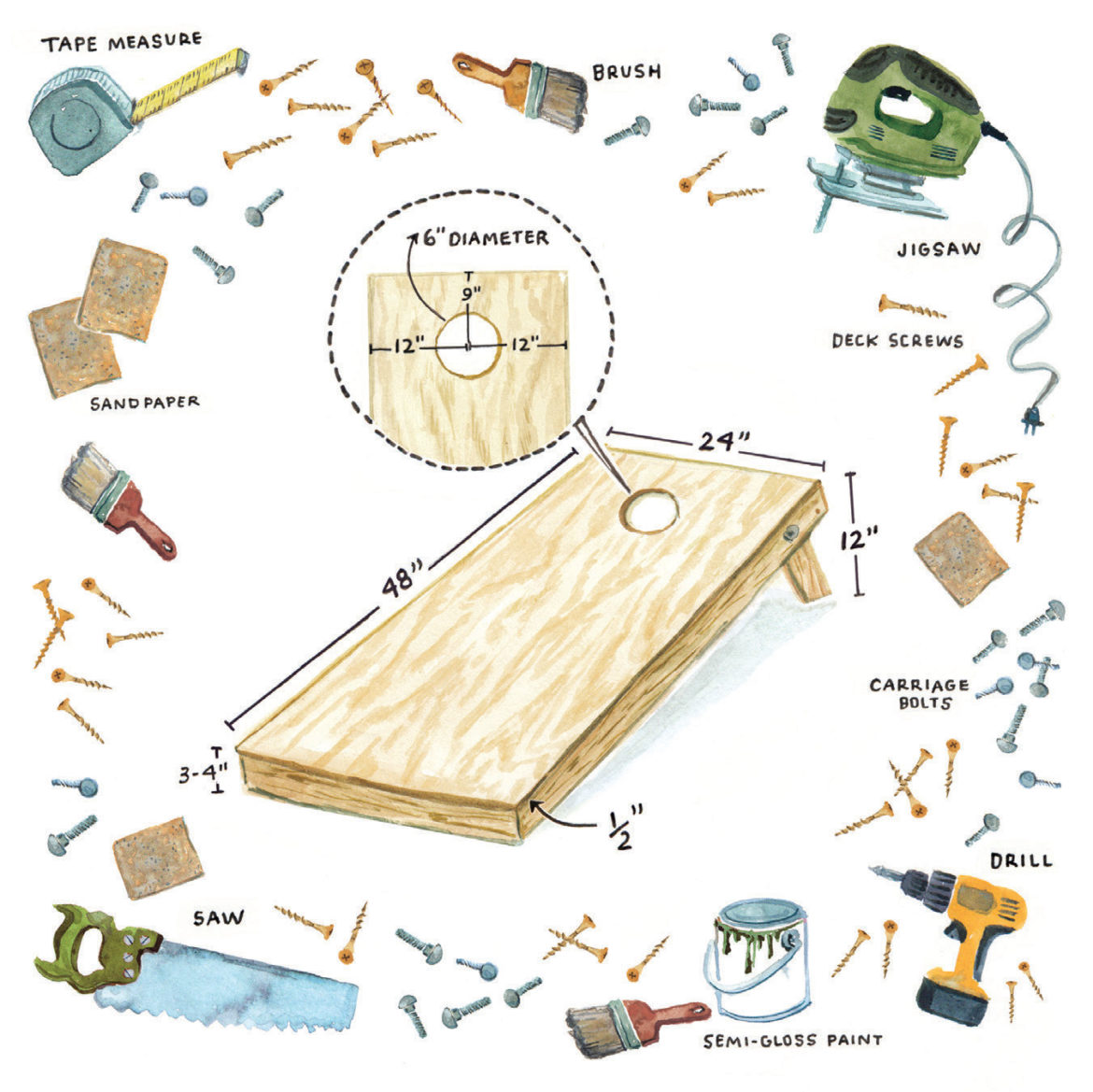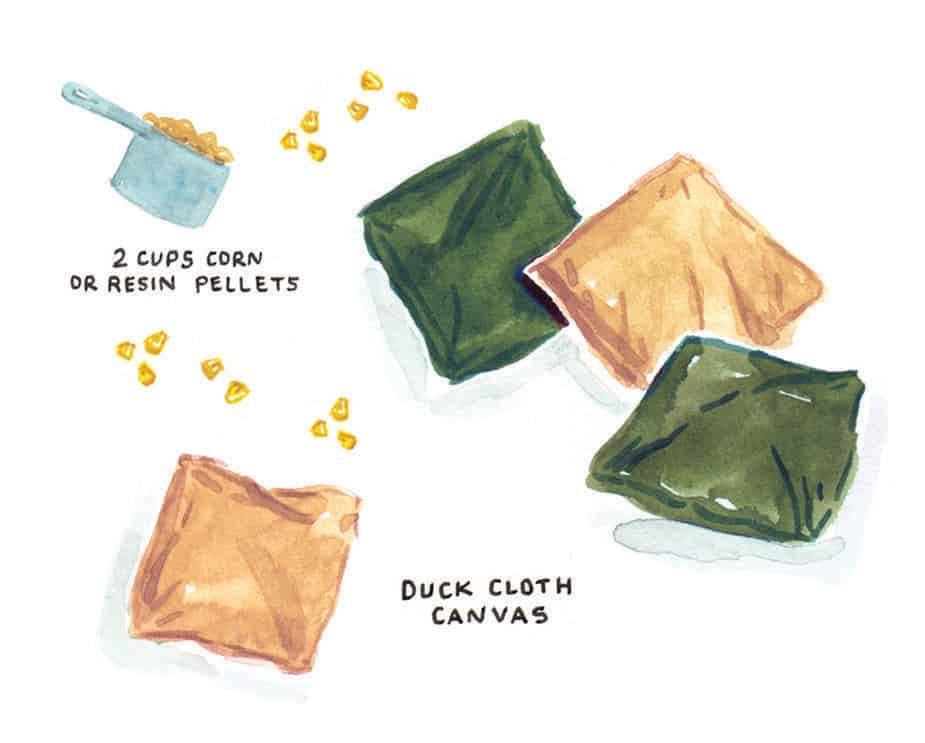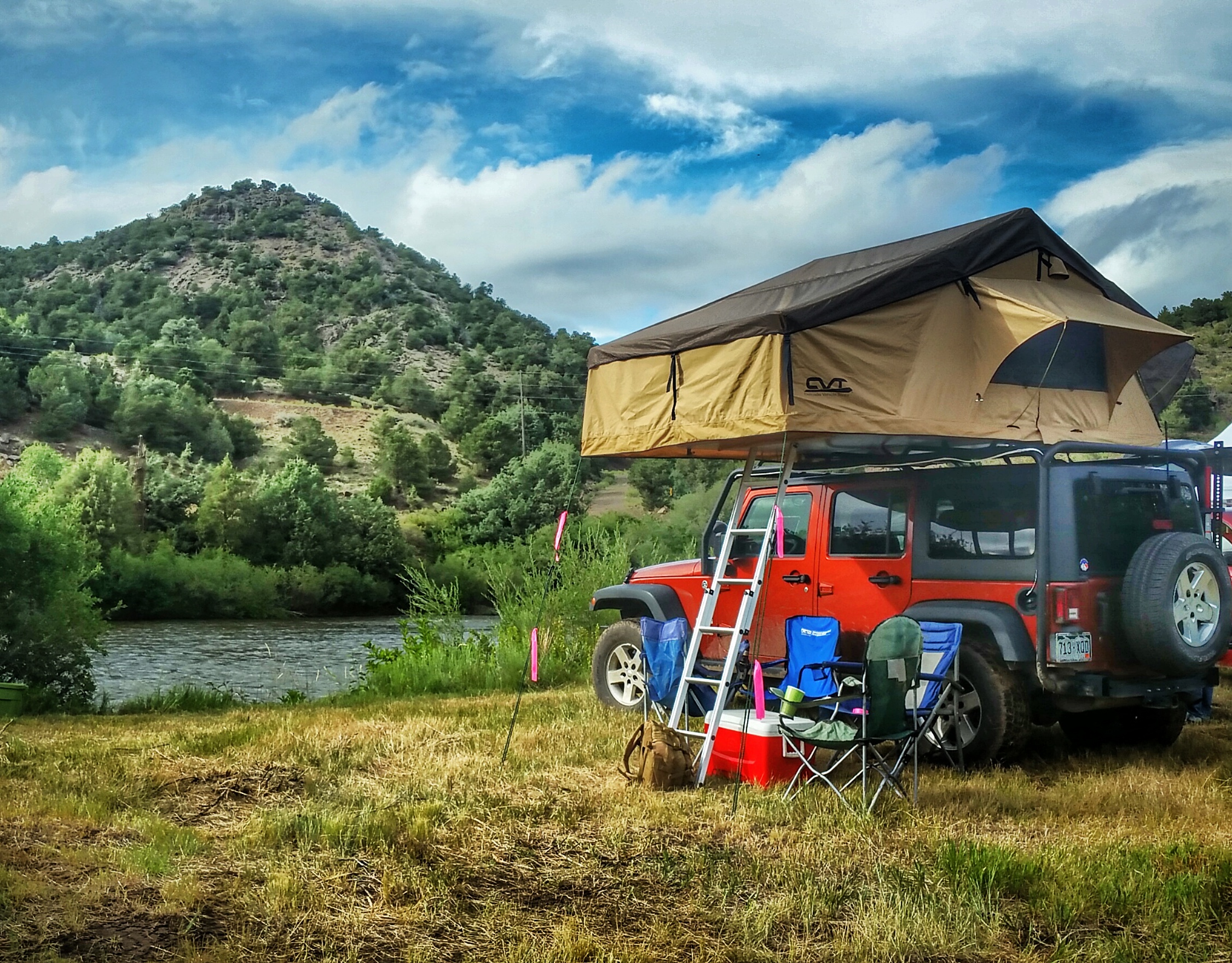illustrations by Jenna Lechner
The origins of the modern lawn game known as cornhole are a bit of a mystery, but a patent filed on September 25, 1883, seems to offer a clue. For it, a person named Heyliger Adams de Windt of Chicago, describes an apparatus for playing a game called Parlor-Quoits, which was an indoor bean bag toss game using inclined boards with a designated hole as a target for the bag. “My present invention has for its object to provide a new game which shall be particularly suited to indoor amusement, and which may be played with an apparatus that will be inexpensive, simple, durable, and noiseless,” wrote Adams de Windt.
These days, cornhole is typically played outside in lawns and parking lots rather than a parlor, but, as in Adams de Windt’s day, it’s still a fairly simple and inexpensive apparatus to make, requiring basic tools and supplies, and completed in an afternoon. Here are our tips:
GO OFFICIAL
Yes, there is an official organization for cornhole: the American Cornhole Association, which formed in 2003 in Cincinnati. Its website lists regulation cornhole board dimensions, including height, width, and diameter of the hole. Boards need to be 48-inches × 24-inches with a half-inch-thick plywood top. At the front, the board should only be 3 to 4 inches high, rising to 12 inches at the rear. The hole diameter is 6 inches, and the center should be placed 12 inches from either edge and 9 inches from the top.
Cornhole bags should also meet certain requirements, including weight (14–16 ounces), dimensions (6-inches × 6-inches), and filling (two cups corn or resin pellets).
GATHER SUPPLIES
Materials include wood 2×4s cut to specific lengths for the frame and legs, plywood for the platform surface, and deck or wood screws, and carriage bolts for attachment. Also, sandpaper, primer, and paint for the finish. Double these instructions to make two boards to form a regulation court. (Yup, there’s rules for that, too).
BUILD THE BOX
Cut the plywood to size for the top, then mark the location of the circle and cut it out using a jigsaw. Cut the 2×4s to form the frame: two at 48 inches long, and two measuring 21 inches. Form a rectangle with these pieces, with the 21-inch boards on the inside. Screw the frame together and attach the plywood top.
CUT AND ATTACH LEGS
Legs will be angled on one end and rounded on the other, where they are attached to the frame. Cut a 2×4 to 12 ¼ inches long, then cut a 25-degree angle at one end. On the opposite end, drill a hole located 1 ¾ inch from the top and side edges. Then round each corner with a 45-degree cut and some sandpaper. Attach the legs, with the rounded end inside the frame and the angled side to the ground, using a carriage bolt. Make sure the rear board height is twelve inches from the ground, and adjust if not.
DECORATE
Sand down the surface of the plywood board and prime it. Apply decoration of your preference, but use semi-gloss paint so the bags will slide smoothly. Have fun!










